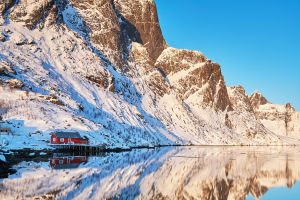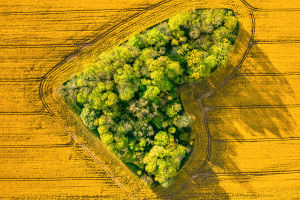Mountaineering has always been a symbol of human conquest and exploration of nature.
And the snow mountain, as one of the most magnificent and mysterious natural landscapes on earth, has also become one of the biggest challenges in the hearts of mountaineering enthusiasts.
So, how difficult is it to climb the snow mountain?
First of all, the high altitude of the snow-capped mountains is one of the biggest challenges for climbers. The higher the altitude, the lower the oxygen content and the thinner the air, this puts a huge load on the body. Lack of oxygen can lead to dizziness, shortness of breath, nausea, and other symptoms, and may even lead to altitude sickness, which can even be life-threatening in severe cases.
Therefore, climbers need to undergo long-term adaptation training to improve the body's tolerance and adaptability. In addition, due to a lack of oxygen and cold, climbers need to withstand the test of extremely low temperatures. The extreme cold weather on the snow mountain may make people feel frozen and lose body temperature, which greatly increases the difficulty of climbing.
Secondly, the complex terrain and harsh climate of the snow mountain are also challenges that climbers must face. The terrain of snow-capped mountains is usually precipitous, filled with cliffs, glaciers, and ice peaks, requiring climbers to have superb skills and experience.
Climbing steep ice walls and crossing treacherous glaciers requires great skill and courage, as well as constant vigilance to prevent accidents.
In addition, the weather in the snow-capped mountains is unpredictable, and natural disasters such as strong winds, blizzards, and lightning often occur, bringing great uncertainty and risks to climbers. Therefore, climbers must always pay attention to weather changes and make full preparations and precautions.
Finally, the geographical environment and traffic conditions of the snow mountain also brought great difficulties to the climbers. Most of the snow-capped mountains are located in remote areas with inconvenient transportation and often require a long hike to reach the starting point of climbing.
In addition, high mountain areas often lack reliable communication and rescue facilities, and once an emergency occurs, rescue operations will become extremely difficult. Therefore, climbers must have good organization and teamwork skills, and ensuring safety is the top priority.
Certainly! In addition to the difficulties and challenges mentioned above, the following can be added:
Psychological stress and loneliness: Mountaineering can often be a lonely and demanding journey. At high altitudes and extreme environments, climbers may face challenges of loneliness and psychological stress.
Long-term isolation from the outside world, lack of social and support systems, as well as the management and adjustment of one's own inner state, put forward higher requirements on the psychological quality of climbers.
High risk and survival skills: mountaineering itself is high-risk, and climbers must have corresponding survival skills. This includes how to use climbing equipment, dealing with emergencies, performing first aid and self-rescue, etc.
In high altitudes and complex terrain, every decision may affect the life and safety of climbers, so correct judgment and action are crucial.
Environmental protection and sustainability: Mountaineering activities have certain impacts on the environment, including destroying vegetation, damaging ecosystems, and leaving garbage.
To protect the natural environment and ensure sustainability, climbers should follow local conservation policies and guidelines, take environmentally friendly actions, and minimize damage to the natural environment.
Basic training and experience: Mountaineering is not an activity that is taken lightly. Climbers need to go through long-term basic training and accumulate rich experience, including knowledge and skills in mountaineering technology, navigation, camping, ice and snow skills, etc. Only through continuous learning and practice can one improve one's ability and safety level in mountaineering.
All in all, climbing to the top of a snow-capped mountain is a very challenging task. High altitude, complex terrain, harsh climate, and remote geographical environment all make snow mountain climbing a dangerous and arduous sport.
Only with adequate preparation, professional skills, and team support can climbers overcome themselves in this unforgiving natural environment and complete the feat of reaching the summit.
Therefore, snow mountain climbing requires not only physical strength and skill but also psychological strength and perseverance. Only by truly understanding the difficulty and magnificence of the snow-capped mountains can we have a deeper understanding of the significance and charm of mountaineering.


